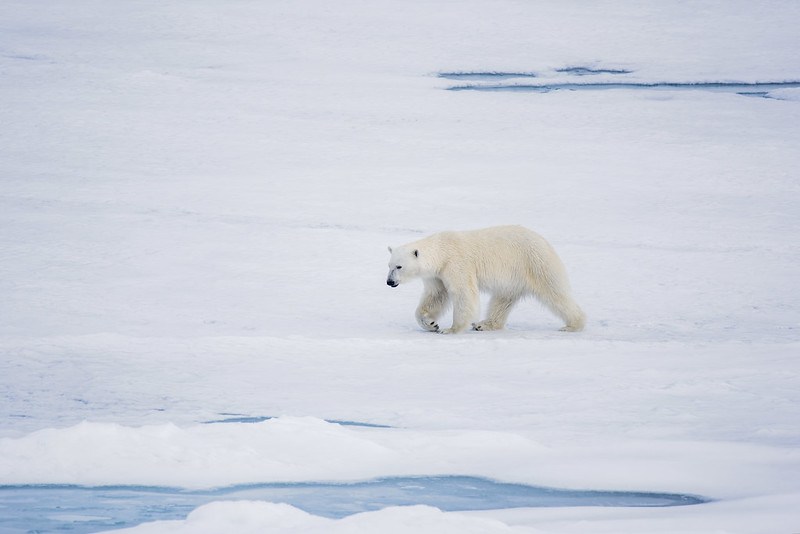If greenhouse gas emissions continue to rise, global warming could mean the near extinction of polar bears by the end of the century.
In a study published Monday in Nature Climate Change, researchers looked at the greatest threat facing polar bears today: the gradual disappearance of their habitat, the ice pack, from which they catch the seals they need for their food.
The polar bear, which lives in Arctic regions where temperatures can drop as low as -40°C in winter, can fast for months, especially during the summer when the ice pack melts every year.
However, because of global warming, which is twice as fast in the Arctic, the absence of ice is lasting longer and longer. Unable to find another food source as rich as seals in their environment, more and more hungry polar bears are already venturing far from their territory, near inhabited areas.
The melting ice pack is a particular challenge for females, who enter their dens in the fall to give birth in mid-winter and emerge in the spring with their cubs.
"They must then catch enough seals to store enough fat and produce enough milk to feed their cubs throughout the summer fast," Steven Amstrup, one of the authors of the study and chief scientist of the NGO Polar Bears International, told AFP.
"By estimating the maximum and minimum weight of the bears, and modelling their energy expenditure, we calculated the maximum number of fasting days a polar bear can endure before adult and pup survival rates begin to decline," added Peter Molnar of the University of Toronto.
Related News
- Global warming and pollution make fish more vulnerable to predators
- Coronavirus-Belgium: CO2 emissions expected to be down by 13% in 2020
- Investors call for an end to Amazon deforestation
For example, a male in the Hudson Bay sub-population that weighs 20% less than normal at the start of the fast would survive only 125 days, compared to 200 days today.
The approximately 25,000 polar bears are divided into 19 distinct sub-populations in Canada, Alaska, Siberia, Svalbard and Greenland. According to the study released on Monday, these groups will not all be affected at the same rate.
However, if greenhouse gas emissions continue at the same rate as today, "the drop in reproduction and survival will jeopardize the persistence of almost all sub-populations by 2100," the researchers concluded. With the possible exception of Queen Elizabeth Islands, noted Amstrup.
Even if warming remained limited to 2.4°C compared to pre-industrial levels - almost half a degree above the Paris Agreement target - this "would not guarantee saving polar bears in the long term," the scientist insists.
"If by magic, even with rising temperatures, the ice pack were to hold, it would probably be okay for polar bears. But their habitat is literally melting as temperatures rise," he added.
The planet's temperature has risen by more than 1°C since pre-industrial times, already leading to an increase in heat waves, droughts and floods. While the current commitments will lead to a world at +3°C, these extreme weather events are set to get worse with each additional half degree.
Classifying polar bears as "critically endangered" on the famous International Union for Conservation of Nature (IUCN) Red List, which considers them only "vulnerable," would probably change nothing in the dire fate of the Arctic animal.
Many of the endangered species are endangered because of poaching or direct destruction of their habitat by humans. But "you can't build a fence to protect polar bears from rising temperatures," said the Polar Bears International scientist.
To save the species, some people are talking about reintroducing animals bred in captivity, or even moving them to the Antarctic. Not feasible, according to Amstrup. "We may have to consider killing the last polar bears, instead of letting them starve to death," he said.
The Brussels Times

